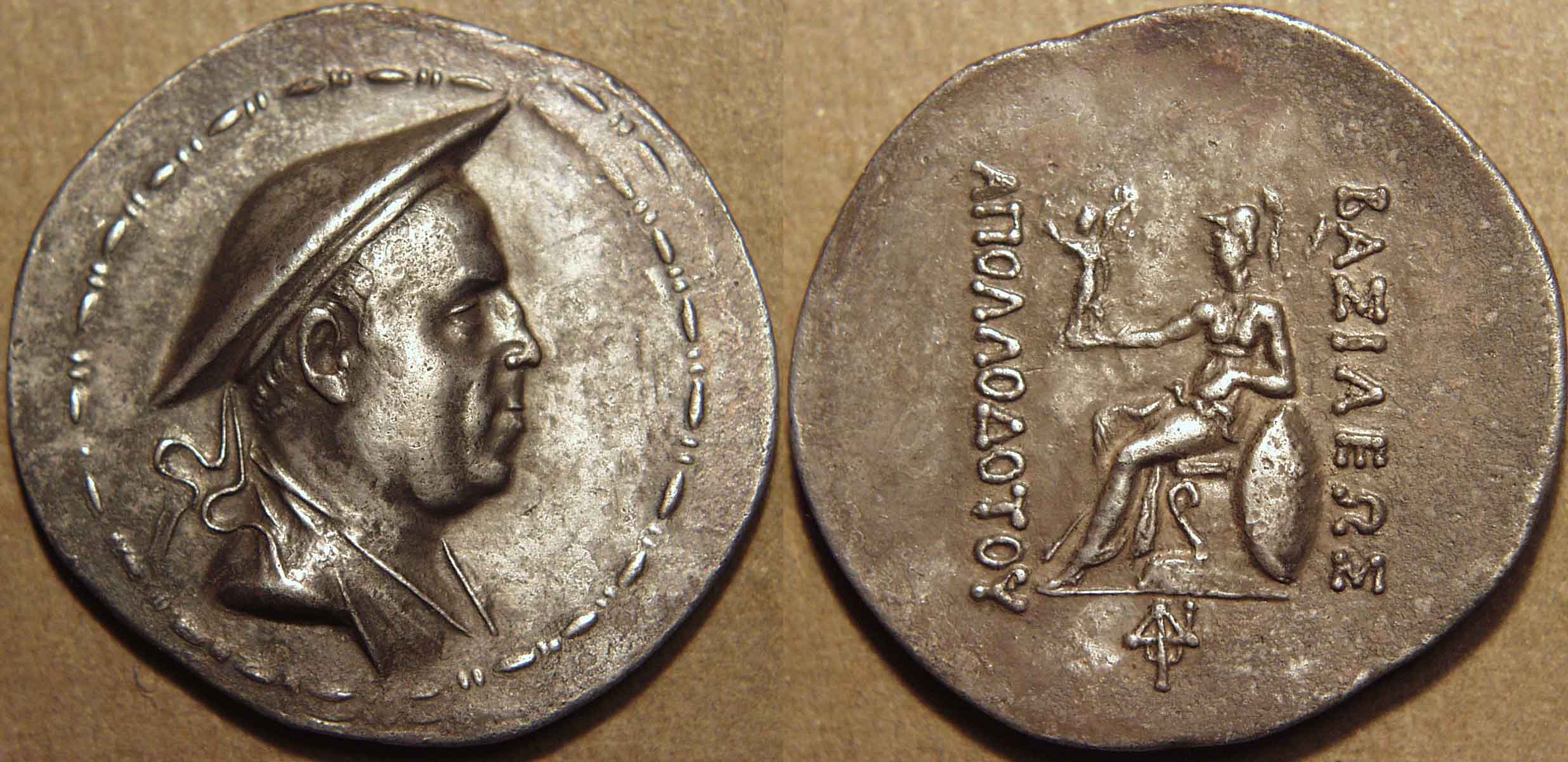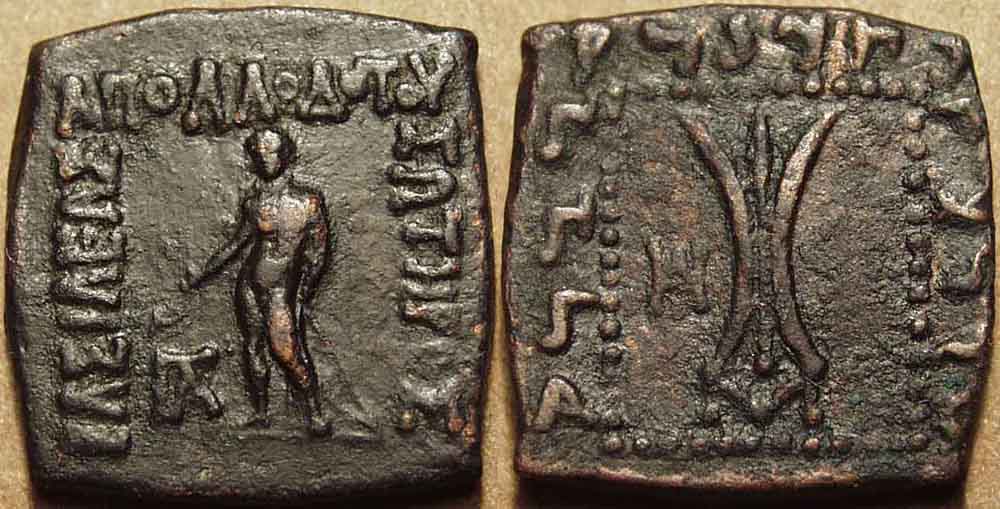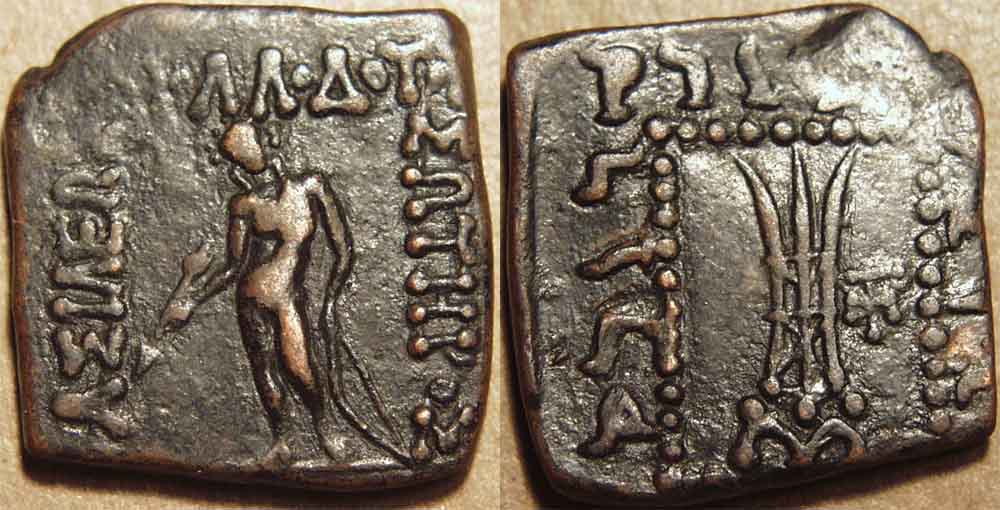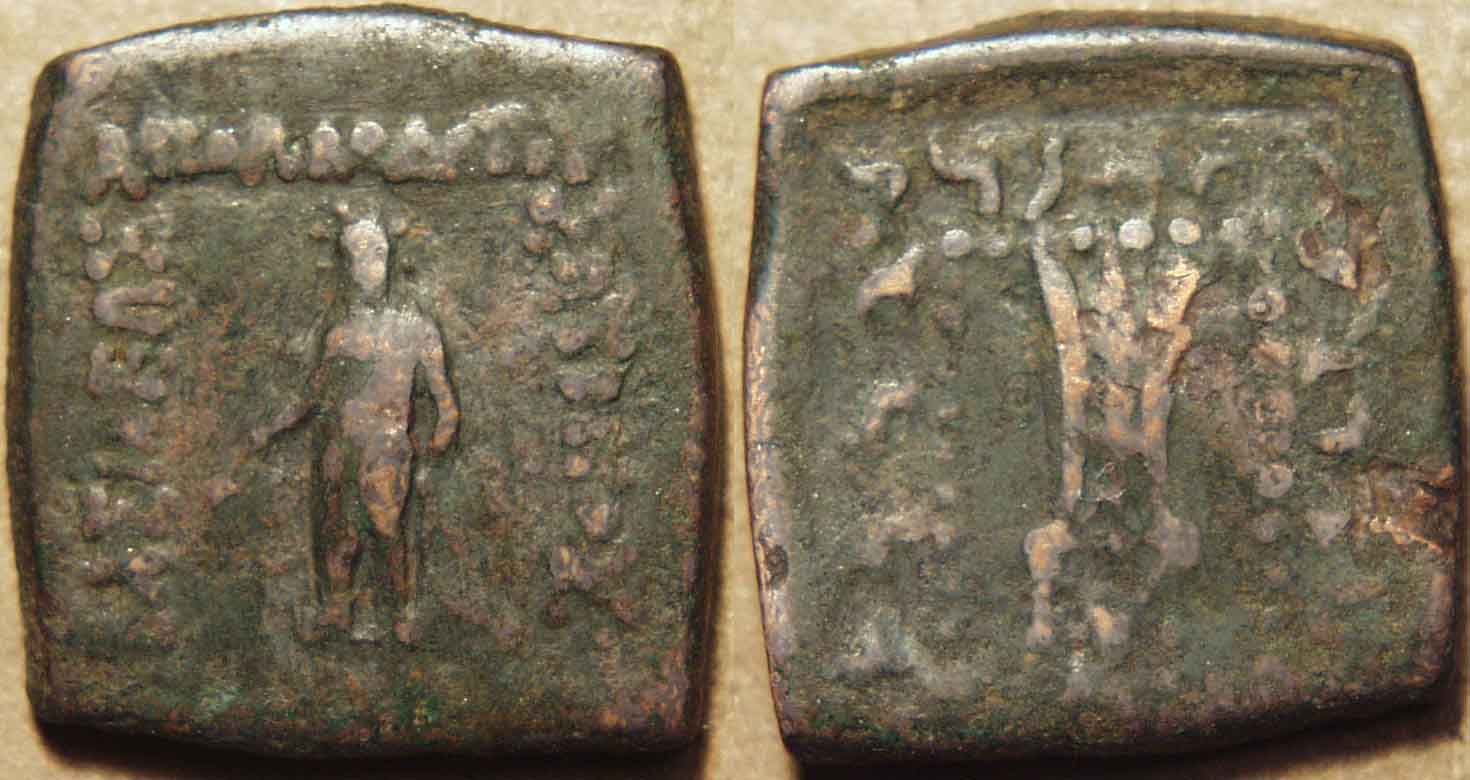
|
Although Apollodotus I issued Attic weight tetradrachms, typical for Bactrian coinage, it is likely he ruled only south of the Hindu Kush, with the Attic weight tetradrachms,
which are very rare, being largely ceremonial and a nostalgic look back at the days when his clan ruled in Bactria. He pioneered the "Indian standard" coinage that became the
normal standard among all subsequent Indo-Greek kings. Bopearachchi dates his reign to c. 174-165 BCE.
|
 |
Apollodotus I |

|
Bactria: Apollodotus I, Silver tetradrachm, c. 174-165 BCE
Weight: 16.47 gm., Diam: 36 mm., Die axis: 12 h
Diademed bust of king facing right, bead and reel border around /
Athena seated left, leaning on shield with left arm
and holding Nike in outstretched right hand, monogram below,
Greek legend: BAΣIΛEΩΣ AΠOΛΛOΔOTOY
|

|
Indo-Greek: Apollodotus I, Silver Attic weight hemidrachm, c. 174-165 BCE
Weight: 1.74 gm., Diam: 14 mm., Die axis: 12 h
Elephant walking right, Greek legend around:
BAΣIΛEΩΣ AΠOΛΛOΔOTOY ΣΩTHPOΣ /
Humped bull walking right, Kharoshthi legend around:
maharajasa apaladatasa tratarasa
|
 |
Apollodotus's initial issue south of the Hindu Kush was this round Attic weight hemidrachm, with a nominal weight of 2.12 gm. It must
not have found acceptance with the local population, as he abandoned it soon after (judging by the scarcity of this type) and switched to a square format coin reflecting the
shape of the Mauryan karshapanas and a new weight standard of about 2.45 gm.
|

|
Indo-Greek: Apollodotus I, Silver "Indian" weight drachm, c. 174-165 BCE
Weight: 2.38 gm., Dim: 15 x 16 mm., Die axis: 12 h
Elephant walking right, Greek legend on three sides:
BAΣIΛEΩΣ AΠOΛΛOΔOTOY ΣΩTHPOΣ
monogram below /
Humped bull standing right, Kharoshthi legend on three sides:
maharajasa apaladatasa tratarasa
|
 |
This was the "Indian style and standard" coin that replaced the previous one. These coins are relatively common.
|

|
Indo-Greek: Apollodotus I, AE double or hemi-obol, c. 174-165 BCE
Weight: 9.42 gm., Dim: 21 x 21 mm., Die axis: 12 h
Apollo standing facing, holding arrow in right hand and bow in left, monogram at left,
Greek legend: BAΣIΛEΩΣ AΠOΛΛOΔOTOY ΣΩTHPOΣ /
Tripod within dotted border, monogram at left,
Kharoshthi legend on three sides: maharajasa apaladatasa tratarasa
|
 |
Apollodotus also issued bronze coins on the Indian format. This type introduces the tripod on the reverse, a feature that was seen on
many Indo-Greek coins right up to the end of the dynasty. The tripod was a sacrificial altar sacred to Apollo.
|

|
Indo-Greek: Apollodotus I, AE double or hemi-obol, c. 174-165 BCE
Weight: 9.65 gm., Dim: 22 x 22 mm., Die axis: 12 h
Apollo standing facing, holding arrow in right hand and bow in left, no monogram at left,
Greek legend: BAΣIΛEΩΣ AΠOΛΛOΔOTOY ΣΩTHPOΣ /
Tripod within dotted border, monogram at right,
Kharoshthi legend on three sides: maharajasa apaladatasa tratarasa
|

|
Indo-Greek: Apollodotus I, AE single or di-chalkon, c. 174-165 BCE
Weight: 5.48 gm., Dim: 17 x 18 mm., Die axis: 12 h
Apollo standing facing, holding arrow in right hand and bow in left,
Greek legend: BAΣIΛEΩΣ AΠOΛΛOΔOTOY ΣΩTHPOΣ /
Tripod within dotted border,
Kharoshthi legend on three sides: maharajasa apaladatasa tratarasa
|
 |
The lighter weight bronze coins are quite rare.
|
|
|